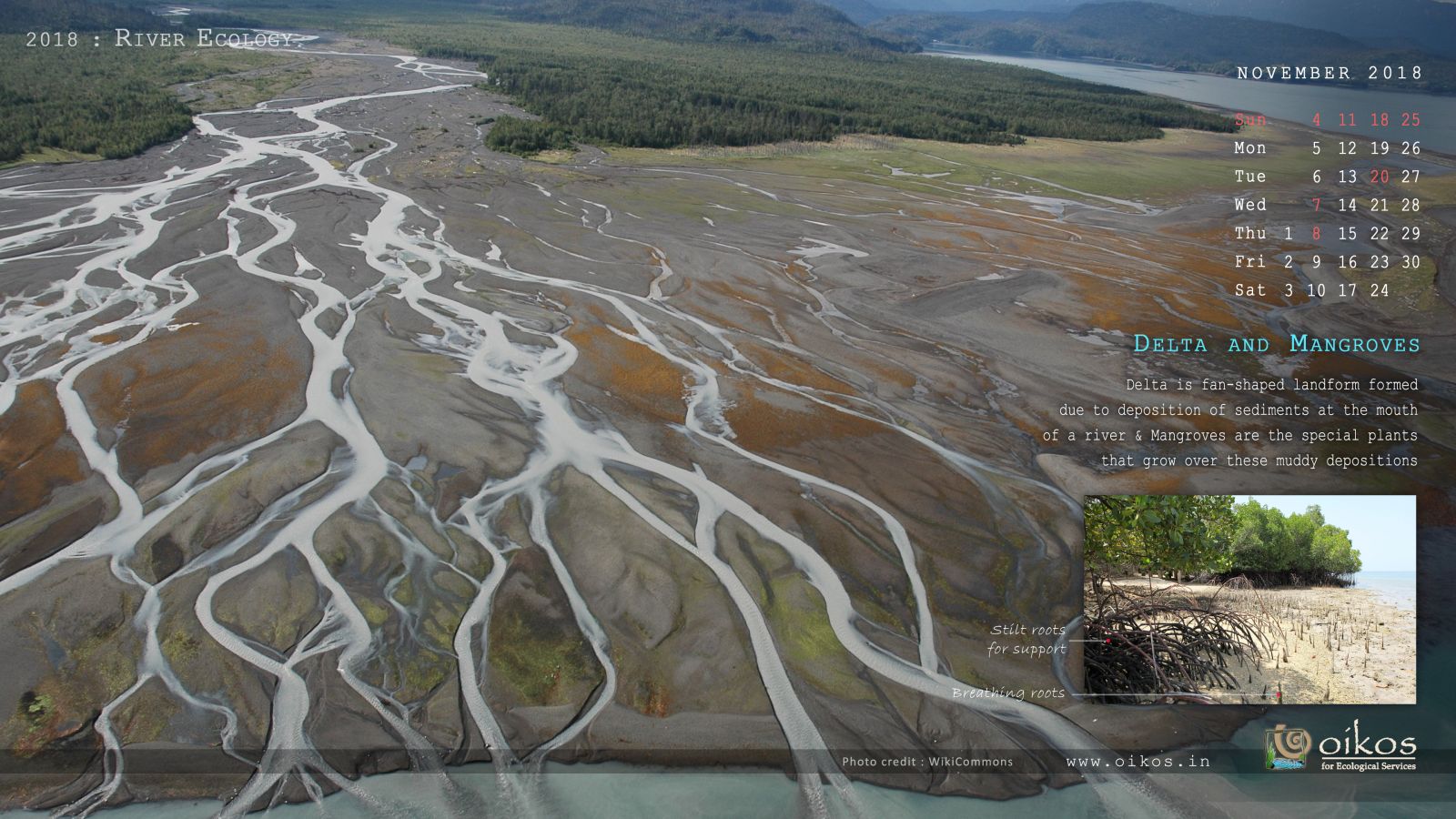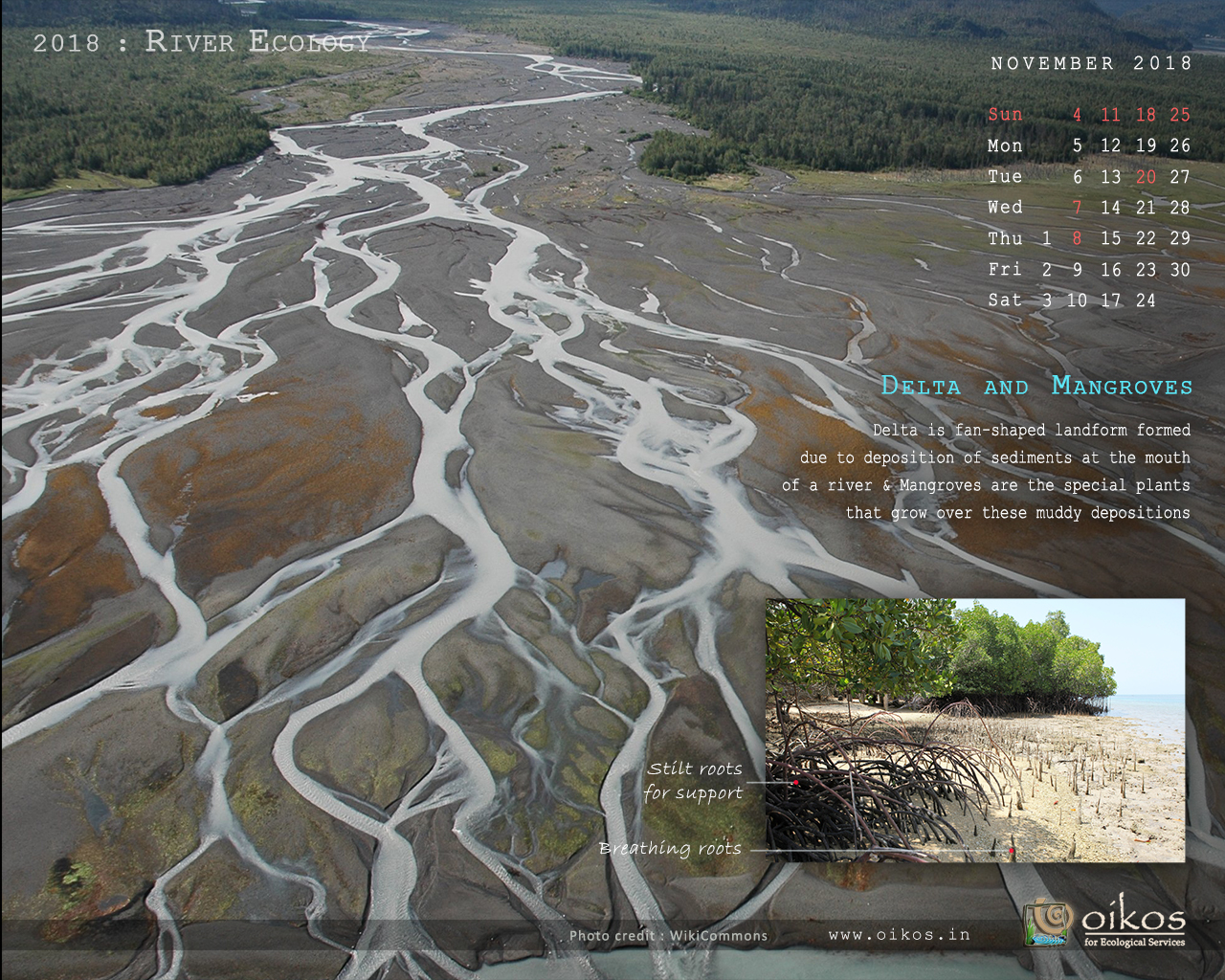Nov - 2018
Dear nature lovers,
Greetings from oikos !
Besides an estuary, the river meets sea in another land form called the Delta. This is a body of alluvium - fine silt, nearly flat and fan-shaped, deposited at or near the mouth of a river where it merges with relatively quiet water, usually a sea.
As the river enters its last phase before draining into the sea, it is no longer confined to the single channel, but spread out in many channels. Slope of the land decreases rivers velocity and reduces its capacity to carry the loads of sediments with it. So the channel is unable to carry this large amount of water and sediments and splits into multiple channels which are called distributaries. All the distributaries of a river continue to flow towards sea. Thus, a fan-shaped river delta eventually develops with various distributaries and sedimental land forms. Also, Delta grows towards ocean by depositing sediments in the shallow seas and thus land building activity continues.
Over time, vegetation covers this delta, but because of its muddy, anaerobic and saline substratum, usual terrestrial or aquatic plants cannot grow here. They are replaced by specialized plants called Mangroves. These forms of vegetation dominate the deltas. Mangroves have some special adaptations to survive in this land form. (a) Roots jutting out of the trunk – called prop roots or stilt roots - to support the plant in the unstable substratum (b) Roots jutting out from the soil into the air, to allow the tree to breathe – called the Pneumatophores or pseudo roots, they are required because the water laden soil cannot supply oxygen to the roots (c) Vivipary – Ability to germinate on mother plant itself as substratum lacks necessary condition for germination. These are just some of the adaptations.


Mangroves formed along creek. Photo Credit : Godrej Mangroves Photo Stock, Vikhroli.
Deltas are usually highly fertile areas and are major agricultural production centers, which attract dense population. e.g. Ganges River delta, Nile River delta. They are also ecologically important, with different species 'assemblages’ - from terrestrial to aquatic marine species and this serves as breeding grounds for marine life. e.g. Sundarban
Unfortunately, delta ecosystems are severely altered by human activities like the dams and hydroelectric power stations, which reduce water flows, nutrients & sediments and lead to gradual erosion at the delta. This results in sinking of ocean front land or looses balance between sediment deposition and coastal erosion. The problem of sea water ingress over land is created by this. E.g. sea ingress in Bengal and Bangladesh. Moreover, the salinity of the deltaic waters increases as less fresh water enters the ocean affecting the biota. Considering the ecological and economical importance of deltas, it is highly imperative that government and policy makers focus on their preservation, else we may have to forgo the services rendered by this highly productive ecosystem.
Regards,
Ketaki & Manasi
With Team oikos !
Please Note -
This Email is a part of awareness campaign initiated by oikos, Pune. Write to us for your valuable feedback.
oikos have been sending ‘Desktop calendars’ since January ’06 with various themes, which can be downloaded from our website.
If you are not willing or not the correct recipient of this Email, kindly reply this mail with subject 'unsubscribe'.
Thanking you for your precious time.
Spread a word !! Forward to nature lovers !
Click on any of the desired options below to get appropriate image.
Save it to computer and set it as desktop background for your computer monitor.
Oikos for ecological services
Ph. 020-25451875
Web: www.oikos.in




